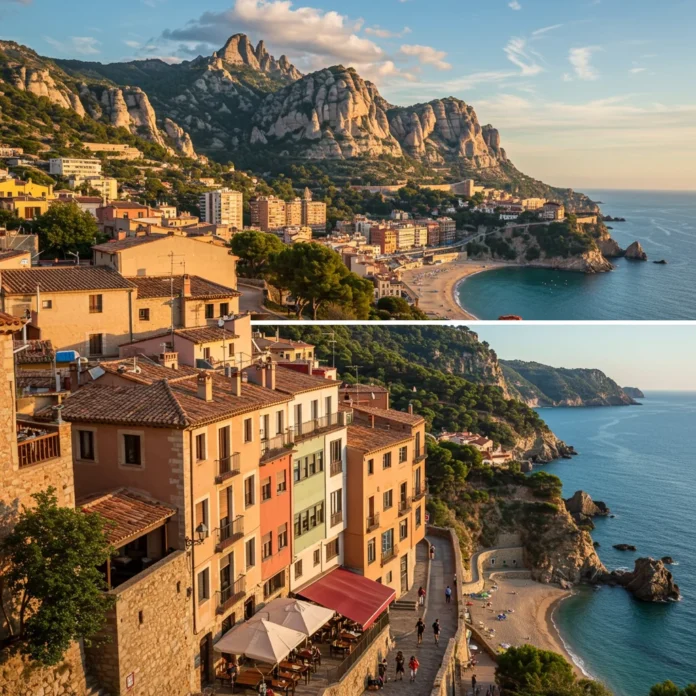Why Consider Exploring Montserrat, Girona & Costa Brava from Barcelona?
Setting out from Barcelona offers travelers the chance to experience three distinct Catalan treasures in one unforgettable journey: the spiritual heights of Montserrat, the medieval charm of Girona, and the sun-kissed shores of the Costa Brava. These destinations are easily accessible from the city, allowing us to combine culture, history, and natural beauty without the need for complicated logistics.
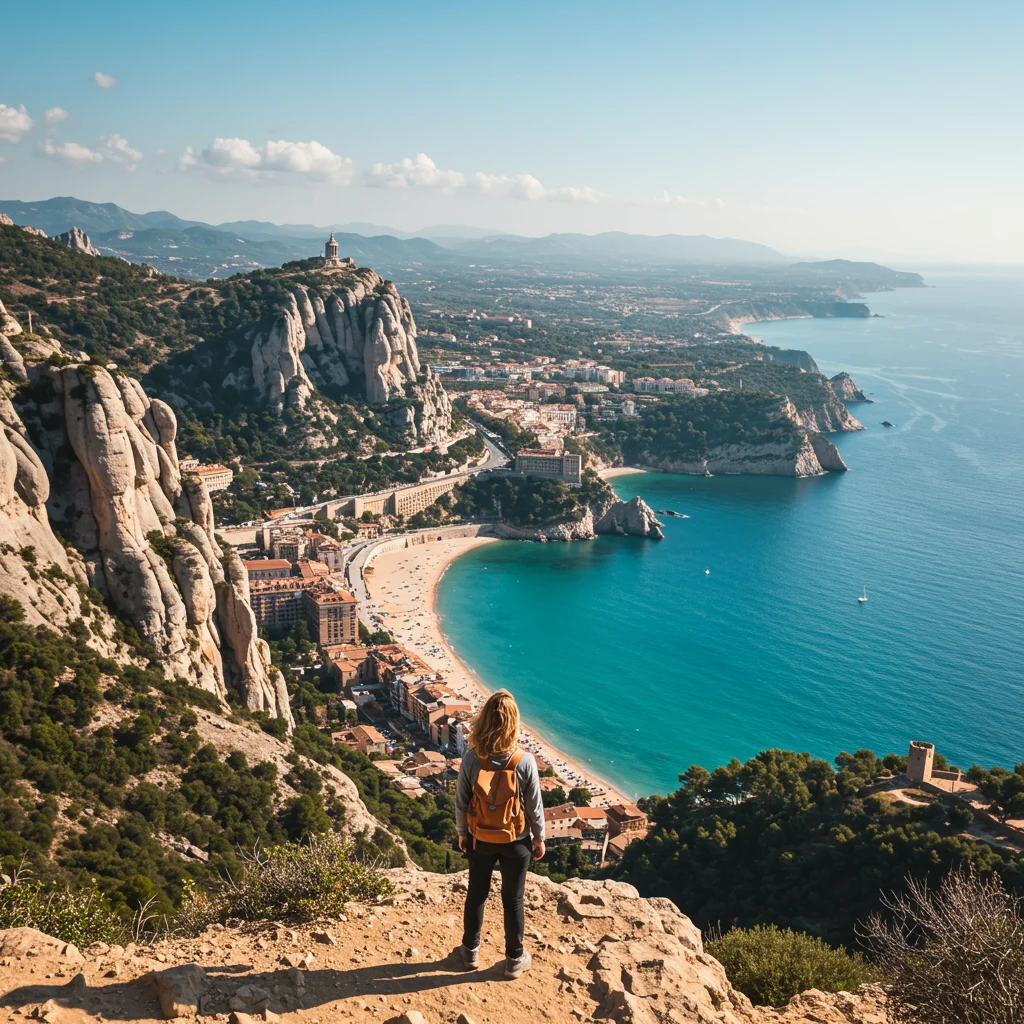
Each location presents a rich tapestry of experiences, from mountain vistas and ancient monasteries to vibrant seaside villages and culinary delights. Whether we seek adventure, relaxation, or a deeper understanding of Catalonia’s heritage, this tour delivers it all in a seamless route.
What Makes Montserrat, Girona & Costa Brava Must-Visit Destinations?
The allure of these destinations lies in their diversity and authenticity. Montserrat captivates with its dramatic rock formations and spiritual legacy. Girona enchants with winding cobbled streets and centuries-old architecture. Costa Brava draws visitors with its rugged coastline, turquoise waters, and charming fishing villages.
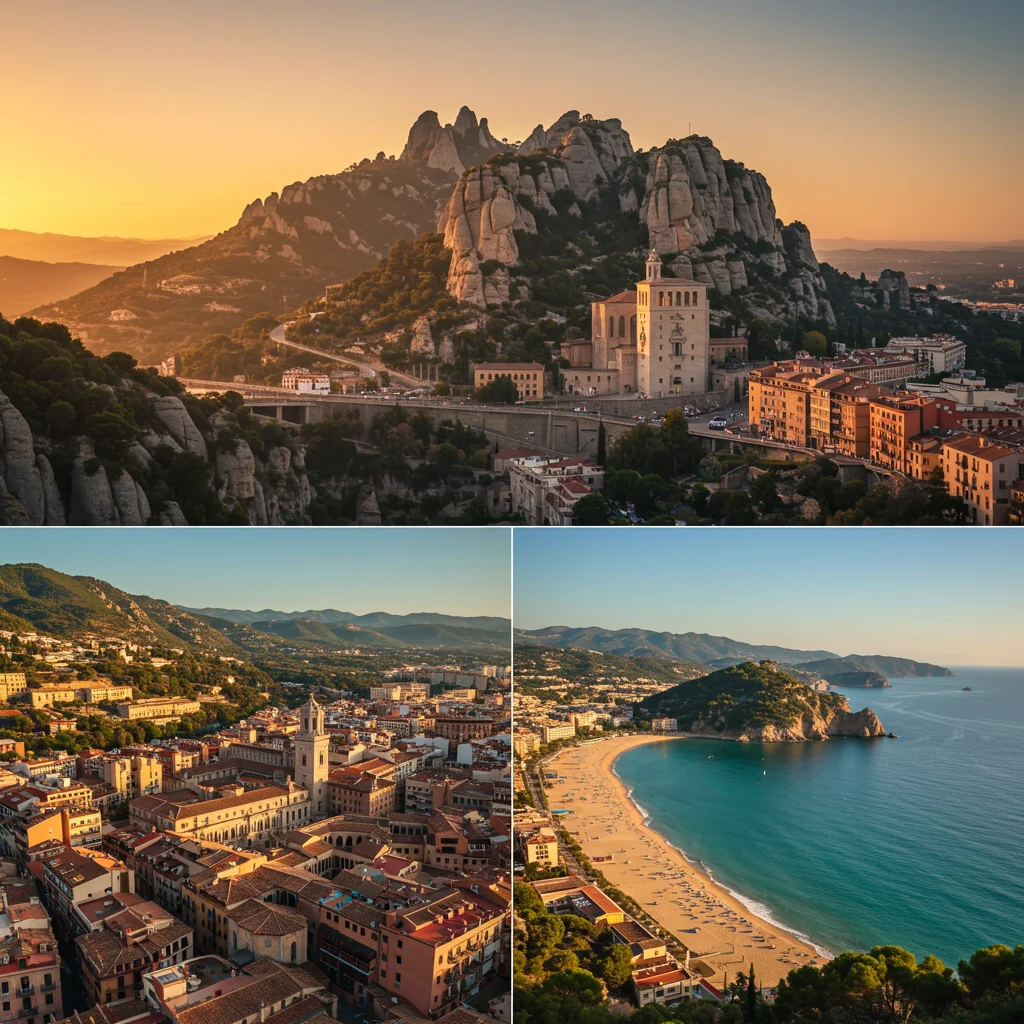
Each stop offers sensory delights: the scent of mountain air in Montserrat, the echo of footsteps on ancient stones in Girona, and the salty breeze and sound of crashing waves on the Costa Brava. Together, they create an itinerary that appeals to history lovers, foodies, families, and outdoor enthusiasts alike.
How Can You Plan Your Barcelona Tour to Montserrat, Girona & Costa Brava?
Planning a trip that covers all three locations requires thoughtful consideration of timing, transportation, and personal interests. We recommend starting with a clear idea of how many days you have, your travel style, and the experiences you value most—whether that’s hiking, sightseeing, or culinary exploration.
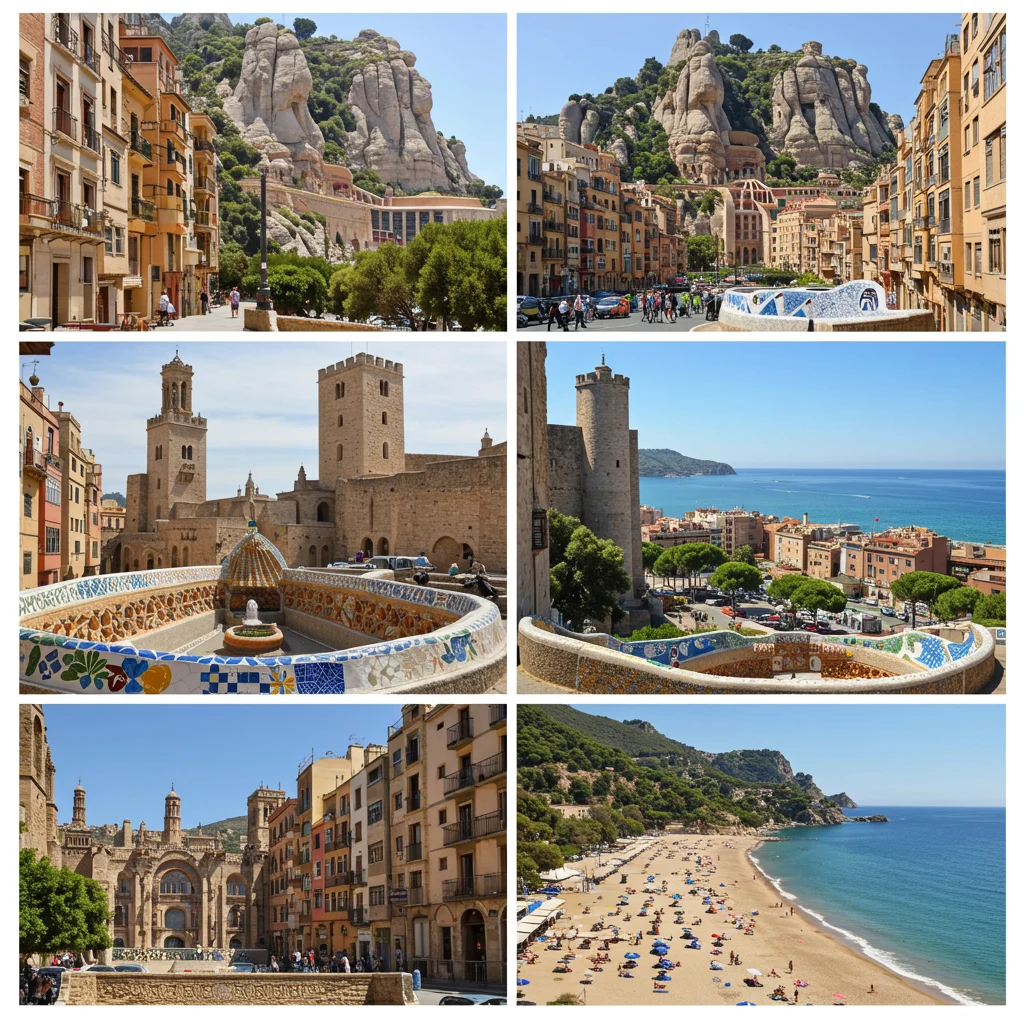
Booking organized excursions can simplify logistics, especially if you want to maximize your time and avoid the stress of navigating unfamiliar roads or train schedules. For those who prefer flexibility, self-guided travel is also rewarding, especially when paired with local guides or audio tours in key sites.
When Is the Best Time of Year to Visit Montserrat, Girona & Costa Brava?
While these destinations are beautiful year-round, spring (April–June) and early autumn (September–October) offer the most pleasant weather. During these months, temperatures are mild, crowds are thinner, and the landscapes are especially vibrant—wildflowers bloom in Montserrat, and the Costa Brava’s beaches remain inviting but less crowded.
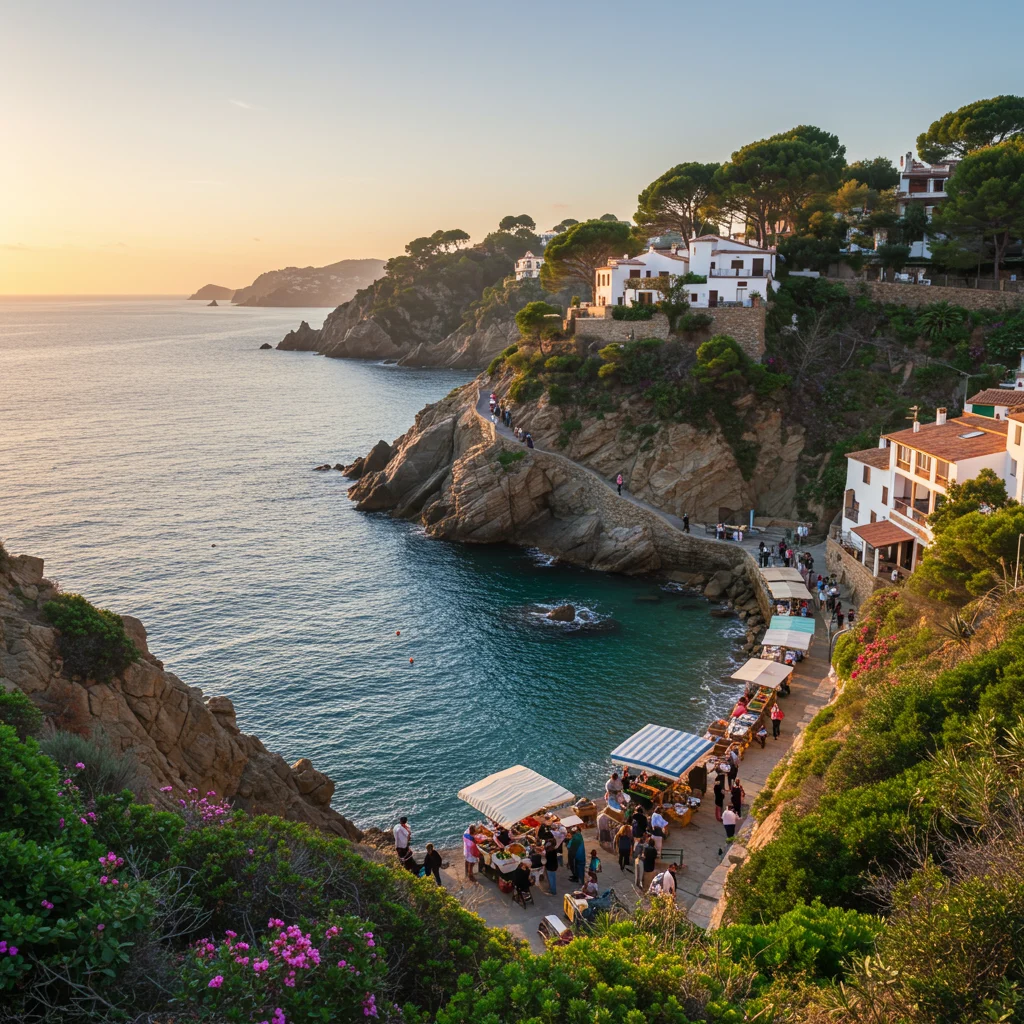
Summer brings lively festivals and prime beach conditions, but also more visitors and higher prices. Winter, while quieter, may see some attractions operating on reduced schedules, though Girona’s old town and Montserrat’s monastery retain their timeless appeal regardless of season.
How Many Days Should You Allocate for This Tour?
For a comprehensive experience, we suggest dedicating at least two to three days to this tour. A single day allows for highlights, but a multi-day itinerary enables us to savor each destination without rushing—spending a night in Girona or on the Costa Brava reveals a different side of Catalan life.

Families and travelers keen on outdoor activities may wish to extend their stay to fully enjoy hiking in Montserrat or water sports along the Costa Brava. Flexible planning makes it possible to tailor the journey to your pace and interests.
What Are the Transportation Options from Barcelona?
Barcelona serves as a well-connected hub, offering multiple transportation choices for reaching Montserrat, Girona, and the Costa Brava. Trains, buses, and private transfers each have their advantages, balancing convenience, cost, and travel time.
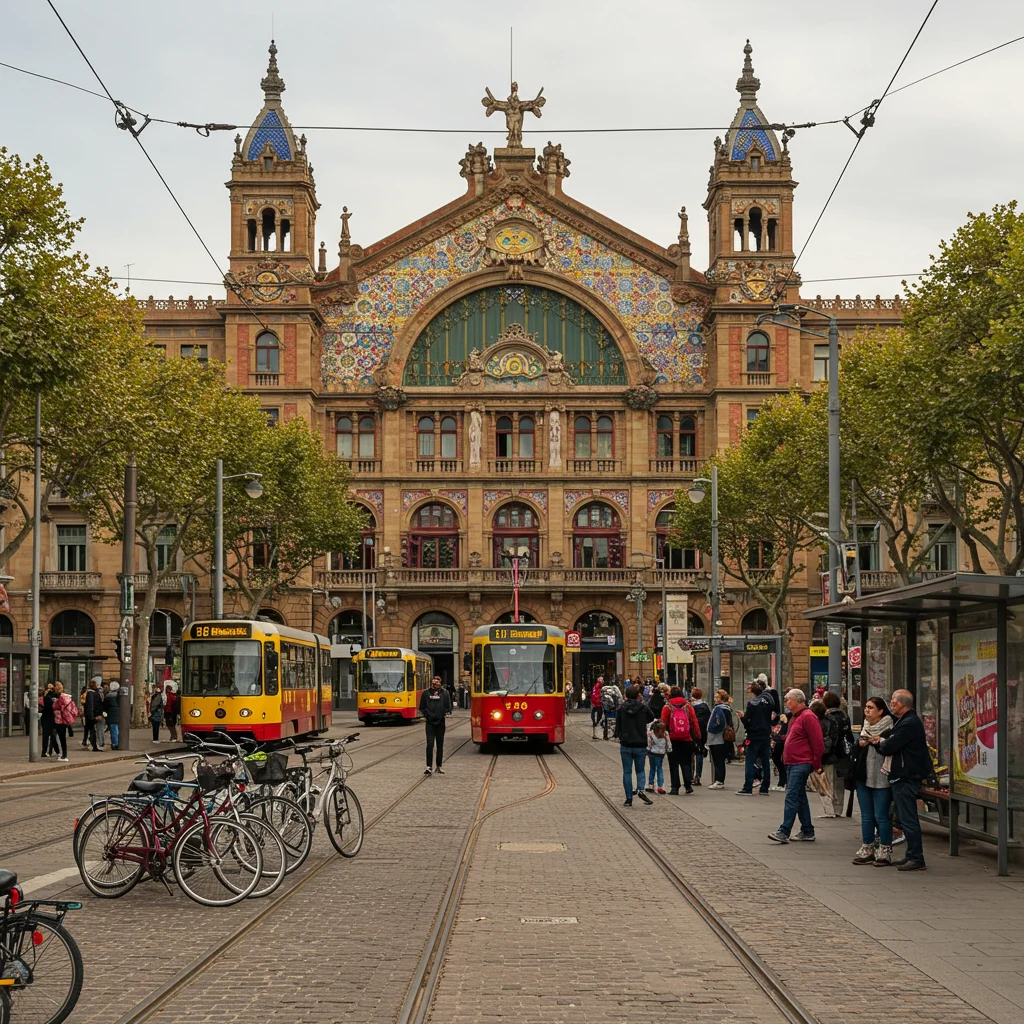
Car rentals offer the greatest freedom, allowing us to explore off-the-beaten-path villages and secluded coves. Public transport, meanwhile, is reliable and eco-friendly, with regular departures to major towns and key attractions.
Should You Choose a Guided Tour or Go Independently?
The choice between a guided tour and independent travel depends on personal preferences and priorities. Guided tours provide expert insight, skip-the-line access, and seamless logistics—ideal for first-time visitors or those seeking a stress-free experience.

Traveling independently offers flexibility and the chance to linger in places that resonate most. For those who thrive on autonomy, carefully researching attractions and booking tickets in advance is essential. Some travelers might blend both approaches, joining guided excursions for specific sites while exploring others at their own pace.
What Awaits at Montserrat: The Majestic Mountain Monastery?
Montserrat rises dramatically above the Catalan plain, its jagged peaks visible from miles away. Revered as both a natural wonder and a spiritual sanctuary, it is home to one of Spain’s most important pilgrimage sites and offers panoramic views that stir the soul.
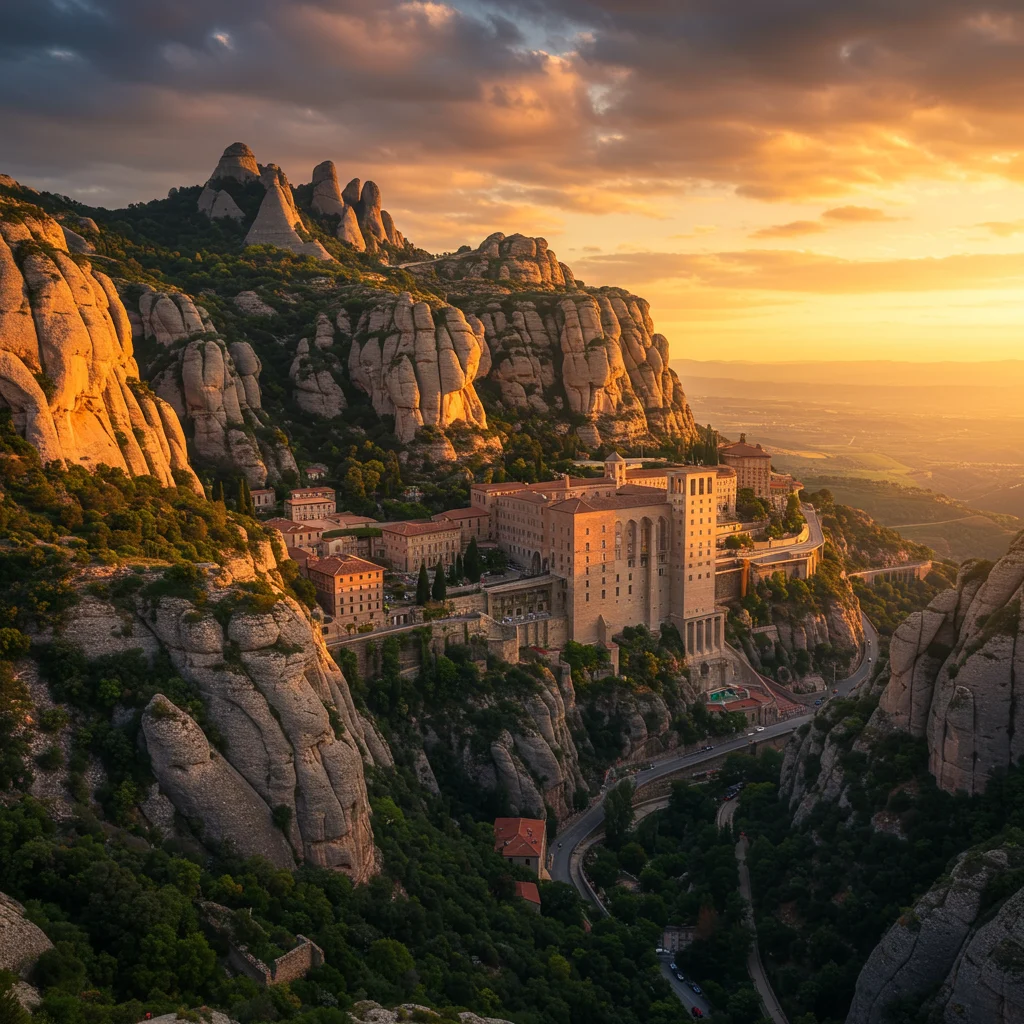
The air here carries a sense of reverence, punctuated by the distant toll of monastery bells and the scent of wild herbs growing among the rocks. Visitors are drawn not only by faith, but by the promise of nature, history, and art.
What Is the History and Significance of Montserrat?
The origins of Montserrat Monastery date back to the 11th century, when Benedictine monks established a sanctuary among the peaks. Over centuries, it became a symbol of Catalan identity and resilience, surviving wars and political upheaval.
Pilgrims have long journeyed here to venerate the Black Madonna, believing in her miraculous powers. The site has inspired artists, writers, and musicians, adding layers of cultural richness to its spiritual legacy.
What Should You See and Do at Montserrat Monastery?
The heart of Montserrat is its monastery complex, where sacred art, music, and tradition converge. Visitors can attend mass, admire centuries-old frescoes, and listen to the angelic voices of the boys’ choir.
Don’t miss the museum, which houses works by El Greco, Picasso, and Dalí, or the tranquil courtyards where monks still walk in silent contemplation.
The Black Madonna: What Is the Legend and Pilgrimage Tradition?
The Black Madonna of Montserrat, known locally as “La Moreneta,” is a wooden statue revered for its dark complexion and miraculous reputation. According to legend, it was discovered in a cave by shepherds in the ninth century and has drawn pilgrims ever since.
Touching the orb in her hand is a ritual for many visitors, believed to bring blessings and protection. The statue’s setting within the basilica, illuminated by flickering candles and the soft murmur of prayers, leaves a lasting impression.
What Makes Montserrat Basilica’s Art and Architecture Special?
The Montserrat Basilica is a masterwork of Gothic and Renaissance design. Inside, sunlight filters through stained glass, casting colorful patterns on intricate stonework and gilded altars.
Art lovers will appreciate the basilica’s ornate chapels and sculptures, while the acoustics make it a memorable venue for choral performances and organ recitals.
When Can You Hear the Montserrat Boys’ Choir?
The Escolania de Montserrat, one of Europe’s oldest boys’ choirs, performs most weekdays around 1 pm and during evening vespers. Their harmonies fill the basilica with ethereal sound, creating a deeply moving experience for all who attend.
We recommend checking the official schedule before your visit, as performance times may vary during holidays and special events.
What Hiking and Nature Trails Are Available in Montserrat?
Montserrat is a paradise for hikers and nature enthusiasts. Well-marked trails wind through pine forests, rocky outcrops, and wildflower meadows, offering breathtaking views at every turn.
Whether you seek a gentle stroll or a challenging ascent, the mountain rewards with sights and sounds that linger long after you leave.
Which Hiking Routes and Viewpoints Are Most Popular?
Popular trails include the Santa Cova Path, leading to the cave where the Black Madonna was found, and the St. Joan Funicular route, which climbs to panoramic viewpoints over the valley below.
- Sant Jeroni Summit: The highest peak, with sweeping 360-degree vistas.
- Camí dels Degotalls: A shaded, art-filled trail perfect for families.
- Via Crucis: A spiritual walk marked by stations of the cross.
What Wildlife and Flora Can You Find in Montserrat?
Montserrat’s unique geology supports a surprising diversity of plants and animals. Look for wild goats leaping across rocky ledges, eagles soaring overhead, and fields of lavender, thyme, and wild orchids in spring.
The mountain’s biodiversity makes every walk a sensory experience, from the rustle of leaves to the scent of sun-warmed herbs.
How Can You Reach Montserrat from Barcelona?
Montserrat is easily accessible from Barcelona, with several convenient options for travelers. The journey itself is scenic, offering glimpses of rolling vineyards and distant peaks.
Choose the mode of transportation that best matches your schedule and sense of adventure.
Train vs. Car vs. Bus: What Are the Pros and Cons?
The train from Barcelona’s Plaça Espanya is a popular choice, connecting to the Montserrat rack railway or cable car. It’s affordable, comfortable, and eco-friendly, though train times may limit flexibility.
Driving offers the most freedom, especially for those planning to visit nearby villages or hike off the main trails. Parking can be limited during peak times. Buses provide a direct route, but may require booking in advance during busy seasons.
What Should You Expect from the Montserrat Cable Car and Rack Railway?
The Aeri de Montserrat cable car glides above the valley, offering heart-stopping views as it ascends the mountain face. The Cremallera rack railway winds through forests and tunnels, delivering passengers to the monastery in comfort.
Both options add an element of excitement to the journey, making the approach as memorable as the destination itself.
What Are the Food and Dining Options in Montserrat?
After a morning of sightseeing or hiking, Montserrat’s restaurants and cafes provide welcome respite. From hearty mountain fare to quick bites, there’s something for every palate.
Which Local Specialties Should You Try?
Regional favorites include mató (fresh cheese drizzled with honey), coca de Montserrat (sweet flatbread), and rustic stews made with local meats and vegetables. These dishes reflect the area’s agricultural heritage and robust flavors.
Sampling these specialties connects us to the land and its traditions, providing an authentic taste of Catalan culture.
Where Are the Best Restaurants and Cafeterias in Montserrat?
The Cafeteria Montserrat offers self-service meals with panoramic views, while Restaurant Abat Cisneros serves traditional Catalan cuisine in a historic setting. Picnic areas are also available for those who prefer to bring their own food and enjoy an al fresco lunch surrounded by nature.
What Tips Help When Visiting Montserrat with Kids?
Montserrat is family-friendly, with accessible trails, interactive exhibits, and plenty of open space for children to explore. We recommend bringing snacks, water, and sun protection, as well as choosing shorter hikes for younger travelers.
Children often enjoy the funicular rides and spotting wildlife along the trails. The monastery’s museum offers engaging displays suitable for all ages.
What Practical Information and Insider Tips Should You Know for Montserrat?
Arriving early helps avoid crowds, especially during weekends and religious holidays. Dress in layers, as mountain weather can change quickly, and wear sturdy shoes for walking on uneven paths.
Advance ticket purchases for the cable car and funicular save time and guarantee your preferred departure. We also recommend checking for special events or concerts, which add extra magic to your visit.
For those looking to maximize their Barcelona experience, combining Montserrat with city highlights—such as the Sagrada Familia or a priority Sagrada Familia tour—makes for a truly memorable trip.
Why Is Girona Considered the Medieval Gem of Catalonia?
Girona enchants visitors with its well-preserved old town, labyrinthine alleys, and riverside houses painted in warm hues. The city’s history unfolds at every corner, from Roman walls to Gothic cathedrals, creating an atmosphere that is both timeless and vibrant.
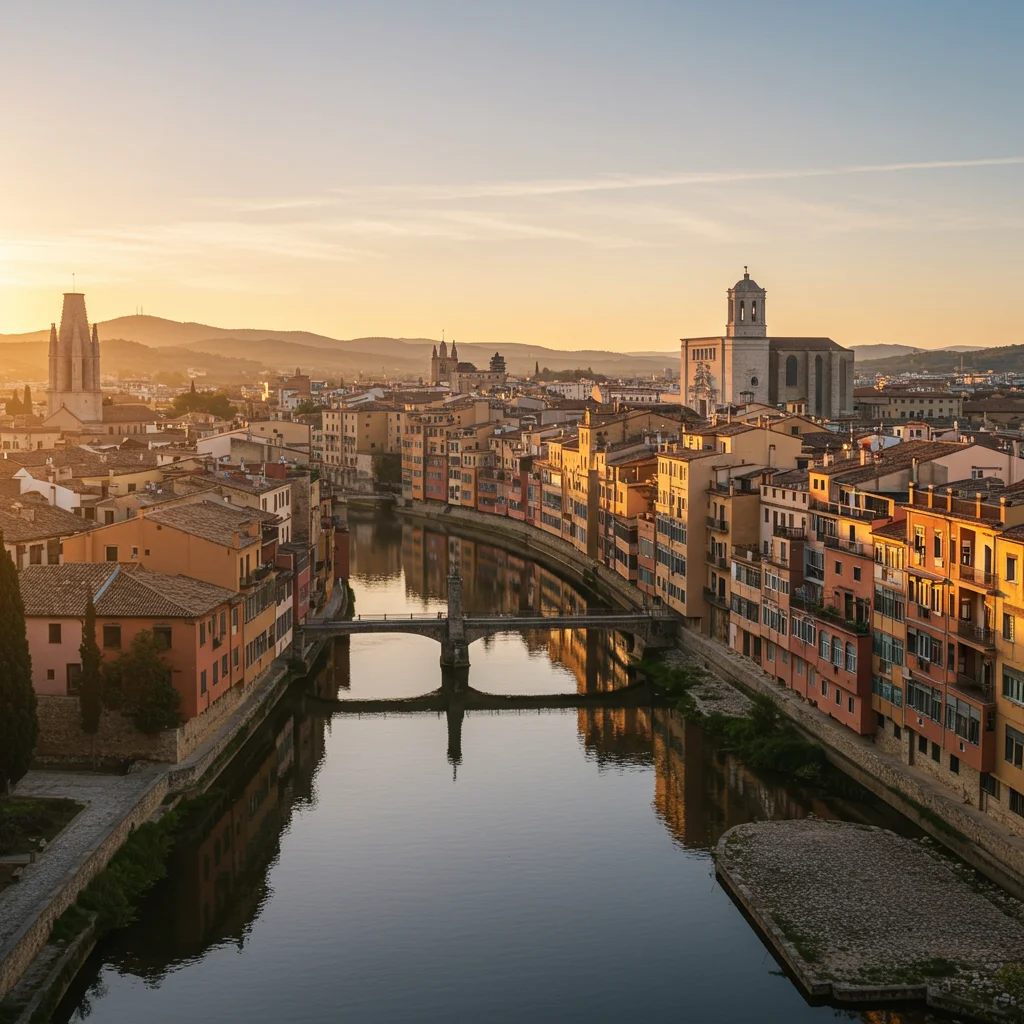
Walking through Girona feels like stepping into a living storybook, where each stone and archway reveals another chapter of Catalonia’s past.
What Is the Brief History of Girona?
Founded by the Romans more than 2,000 years ago, Girona has witnessed countless battles, sieges, and cultural transformations. Its strategic location made it a prize for conquerors, while waves of Jewish, Christian, and Muslim residents left an indelible mark on its architecture and traditions.
The city has survived invasions and floods, emerging today as a symbol of resilience and multicultural heritage.
What Are the Top Attractions in Girona?
Girona’s compact center is packed with must-see landmarks, each reflecting a different era in the city’s history. We recommend setting aside time to explore its cathedrals, ancient baths, and colorful riverside vistas.
What Awaits at Girona Cathedral and Its Tower?
The soaring Girona Cathedral boasts the widest Gothic nave in the world. Climbing its tower rewards us with sweeping views over the terracotta roofs and distant Pyrenees.
Inside, intricate altarpieces and stained glass windows reveal the city’s wealth and devotion across centuries.
Why Is the Jewish Quarter El Call Worth Visiting?
El Call, Girona’s medieval Jewish Quarter, is one of Europe’s best preserved. Narrow, winding lanes shaded by ancient stone walls evoke the daily life of a thriving community that flourished here until the 15th century.
Interpretive centers and museums provide insight into Jewish culture, traditions, and the challenges faced during periods of persecution.
What Makes the Arab Baths an Ancient Wellness Retreat?
The Arab Baths offer a glimpse into medieval bathing culture, with Romanesque arches, stone columns, and a tranquil central pool. Visitors can wander through the cool, echoing chambers and imagine the rituals of cleansing and relaxation that took place here centuries ago.
Why Are the Colorful Houses on the Onyar River So Iconic?
The Onyar River is lined with houses painted in ochre, pink, and gold, their reflections shimmering in the water below. This picturesque scene is a favorite for photographers, especially at sunset when the city glows with warm Mediterranean light.
What Is It Like to Walk the Medieval Walls of Girona?
Girona’s ancient walls offer a unique perspective on the city and its surroundings. Walking along these ramparts, we’re treated to panoramic views of church spires, bustling plazas, and distant hills dotted with cypress trees.
Access points are well marked, and the walk is suitable for most fitness levels, though some sections involve stairs and uneven stones.
Where Are the Best Photo Spots in Girona?
For the perfect shot, we recommend:
- The steps of Girona Cathedral, especially in early morning light.
- Pont de Ferro (Eiffel Bridge) for views of the Onyar houses.
- The city walls at sunset, when the landscape glows.
- El Call’s winding alleys, where shadows and stone create dramatic compositions.
Where Was Game of Thrones Filmed in Girona?
Girona’s evocative streets served as the backdrop for King’s Landing and Braavos in the popular series Game of Thrones. Fans will recognize the cathedral steps, Plaça dels Jurats, and Sant Pere de Galligants monastery from key scenes.
Self-guided tours and local guides are available for those eager to retrace the footsteps of their favorite characters.
What Local Food and Culinary Experiences Await in Girona?
Girona’s culinary scene is a delightful blend of tradition and innovation. From bustling markets to award-winning restaurants, the city invites us to savor bold flavors and time-honored recipes.
Sampling local dishes is a highlight, whether at a cozy tapas bar or a Michelin-starred dining room.
Which Dishes and Sweets Should You Not Miss?
Must-try specialties include xuixo (crispy, sugar-dusted pastry filled with cream), escalivada (roasted vegetables), and butifarra amb mongetes (grilled sausage with beans). For a sweet finish, sample artisanal chocolates or ice cream crafted by local chefs.
To immerse yourself in Barcelona’s food culture before your trip, consider reading our insights from the Barcelona Market Walk at La Boqueria.
Where Are the Best Restaurants and Tapas Bars in Girona?
Girona boasts a range of dining options, from rustic taverns to contemporary bistros. El Celler de Can Roca, consistently ranked among the world’s best, is a must for food enthusiasts, while local favorites like La Fabrica and Casa Marieta offer authentic Catalan fare in welcoming settings.
Tapas bars in the old town provide a lively atmosphere, perfect for sampling small plates and local wines.
How Do You Get to Girona from Barcelona?
Girona is just 40 minutes from Barcelona by high-speed train, making it an easy day trip or overnight destination. Trains depart frequently from Barcelona Sants station, offering comfort and efficiency.
Buses and car rentals provide additional flexibility, especially for those planning to visit nearby villages or continue onward to the Costa Brava.
Train, Bus, and Car: Which Is Best?
Trains are the fastest and most convenient option for most travelers. Buses are budget-friendly, with stops in the city center. Driving allows us to explore at our own pace and visit attractions off the main tourist trail, though parking in Girona’s old town can be challenging.
Is It Better to Take a Day Trip or Stay Overnight in Girona?
While Girona can be explored in a day, staying overnight reveals a quieter, more atmospheric side of the city. After day-trippers depart, the old town comes alive with local festivals, evening strolls, and candlelit dinners.
Those with limited time may combine Girona with Montserrat or the Costa Brava for a full day of adventure, while slower travelers can savor the city’s charms over two or more days.
What Makes Costa Brava Spain’s Stunning Coastal Paradise?
The Costa Brava stretches north from Barcelona to the French border, its rugged cliffs and golden beaches forming one of Spain’s most beloved coastlines. Crystal-clear waters, hidden coves, and whitewashed villages create a landscape that is both dramatic and soothing.

The scent of pine trees mingles with salty sea air, while the rhythmic crash of waves and the warmth of the Mediterranean sun invite us to linger by the shore.
What Is Costa Brava Best Known For?
Famed for its pristine beaches and turquoise waters, the Costa Brava also boasts a rich cultural heritage. Artists like Salvador Dalí found inspiration in its light and landscapes, while medieval castles and Roman ruins dot the hillsides.
Food, art, and adventure come together here, making it a paradise for travelers seeking both relaxation and discovery.
Which Beaches Are the Top to Visit on the Costa Brava?
Costa Brava’s coastline is dotted with beaches for every taste, from lively resort towns to tranquil, hidden coves. Each offers a unique atmosphere, whether you crave family fun, historical intrigue, or postcard-perfect scenery.
What Family-Friendly Activities Await at Platja d’Aro?
Platja d’Aro is known for its wide sandy beach, safe swimming, and vibrant promenade. Water parks, playgrounds, and seaside cafes make it a favorite for families, while shops and nightlife offer entertainment for all ages.
How Does Tossa de Mar Blend History with the Beach?
Tossa de Mar combines golden sands with a walled medieval old town perched above the bay. Exploring its narrow streets and ancient castle, we feel the echoes of centuries past before descending to the beach for a refreshing swim.
The contrast between sunbathers and stone ramparts makes Tossa de Mar one of the Costa Brava’s most photogenic spots.
Why Is Calella de Palafrugell a Must-See Village?
Calella de Palafrugell charms with its whitewashed houses, bobbing fishing boats, and flower-filled balconies. The scent of salt and jasmine wafts through its narrow lanes, leading to sheltered coves perfect for a peaceful dip.
This village captures the essence of the Costa Brava—authentic, unhurried, and utterly picturesque.
Where Can You Find Hidden Coves and Secluded Spots?
Adventurous travelers will delight in discovering secret beaches like Cala Pola, Cala Futadera, and Cala Aiguablava. Reached by winding paths or boat, these coves offer crystal-clear waters and a sense of tranquility far from the crowds.
Packing a picnic and spending a lazy afternoon on a secluded shore is one of the Costa Brava’s great pleasures.
Which Charming Villages Line the Costa Brava?
Beyond the beaches, the Costa Brava is home to villages where time seems to stand still. Cobblestone streets, ancient churches, and lively markets invite us to slow down and savor each moment.
What Makes Cadaqués Dalí’s Seaside Muse?
Cadaqués is a whitewashed fishing village that inspired Salvador Dalí and other artists. Its labyrinthine streets, rocky coves, and vibrant art scene create a unique blend of tradition and creativity.
Visiting Dalí’s house-museum in nearby Portlligat offers a glimpse into the surrealist master’s world.
Why Should You Visit Begur for Castles and Clifftop Views?
Begur perches atop a hill, its medieval castle commanding sweeping views of the coastline. The town’s pastel-colored houses and lively squares invite exploration, while nearby coves provide quiet escapes from the bustle.
How Does Pals Embody Medieval Beauty?
Pals is a perfectly preserved medieval village, its stone towers and arched gateways transporting us to another era. Flower-filled balconies, artisan shops, and panoramic viewpoints add to its fairy-tale appeal.
What Outdoor Activities Can You Enjoy on the Costa Brava?
The Costa Brava’s diverse landscapes offer endless opportunities for adventure. Whether gliding through turquoise waters, hiking cliffside trails, or exploring underwater worlds, there’s something for every outdoor enthusiast.
As experts often say:
“Travel is the only thing you buy that makes you richer.”
Where Are the Best Snorkeling and Scuba Diving Spots?
Crystal-clear waters and vibrant marine life make the Costa Brava a top destination for snorkeling and diving. L’Estartit and the Medes Islands are renowned for their underwater reserves, teeming with fish, octopus, and colorful corals.
Several local dive centers offer courses and excursions suitable for beginners and experienced divers alike.
Where Can You Go Kayaking and Paddleboarding?
Calm bays and dramatic cliffs create ideal conditions for kayaking and paddleboarding. Guided tours often include stops at sea caves, hidden beaches, and snorkeling spots, allowing us to experience the coastline from a fresh perspective.
Equipment rentals are widely available in major beach towns.
What Makes the Camí de Ronda Trail Special for Hikers?
The Camí de Ronda is a historic coastal path that once served as a lookout for smugglers. Today, it offers hikers stunning views, fragrant pine forests, and access to otherwise unreachable coves.
Sections of the trail vary in difficulty, making it accessible for all ages and fitness levels.
What Should You Know About Costa Brava’s Culinary Scene?
Seafood reigns supreme on the Costa Brava, with daily catches transformed into dishes bursting with Mediterranean flavor. From rustic beachside taverns to haute cuisine, the region’s food is as inviting as its scenery.
Which Seafood Specialties and Paella Should You Try?
Signature dishes include suquet de peix (fish stew), arroz caldoso (brothy rice with seafood), and, of course, paella. Fresh anchovies, prawns, and clams are local staples, best enjoyed with a glass of chilled white wine.
If you are inspired to bring the flavors of Spain home, consider a Paella Masterclass in Barcelona before or after your Costa Brava adventure.
Where Are the Michelin-Starred Restaurants?
The Costa Brava is home to several Michelin-starred restaurants, including El Celler de Can Roca in Girona and Miramar in Llançà. These establishments blend tradition with innovation, earning international acclaim for their creative menus and impeccable service.
Reservations are essential, especially during peak travel seasons.
How Do You Travel from Barcelona to Costa Brava?
Multiple routes connect Barcelona to the Costa Brava, with options to suit every traveler. Driving offers the most flexibility, allowing us to explore hidden beaches and villages at our own pace.
Buses depart from Barcelona Nord station to major coastal towns, while trains serve inland destinations near the sea. Organized tours provide a hassle-free way to see the highlights without worrying about logistics.
What Are the Best Routes and Transportation Options?
The AP-7 motorway is the fastest route for drivers, while scenic coastal roads like the C-31 and GI-682 offer breathtaking views. Public transport is reliable, though connections to smaller villages may require a taxi or local bus.
Should You Visit the Costa Brava as a Day Trip or Stay Longer?
While day trips from Barcelona are possible, the Costa Brava rewards those who linger. Staying overnight allows us to experience quiet evenings by the sea, sunrise swims, and local festivals that bring villages to life.
Multi-day stays are especially recommended for families, beach lovers, and anyone seeking a slower pace of travel.
What Are Sample Itineraries for Montserrat, Girona & Costa Brava Combined?
Combining these three destinations creates a well-rounded tour, balancing culture, adventure, and relaxation. Here are some itinerary ideas to help us make the most of our time.
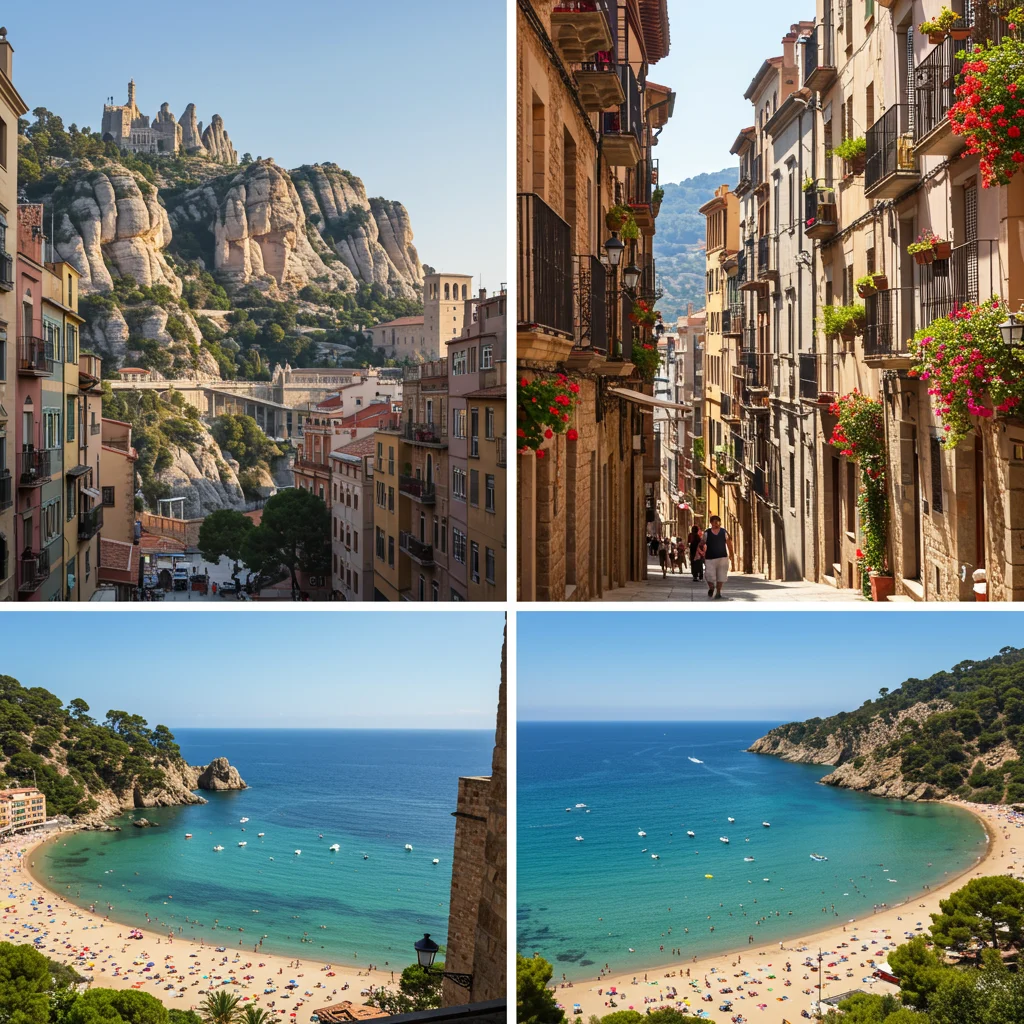
What Can You See on a One-Day Highlights Tour from Barcelona?
For those with limited time, a highlights tour might include:
- Morning visit to Montserrat Monastery and a short hike to a scenic viewpoint.
- Afternoon in Girona’s old town, exploring the cathedral and Jewish Quarter.
- Evening stroll along the Costa Brava’s beaches, with dinner in a seaside village.
Organized tours are available for this route, often including transportation, guides, and entrance fees.
What Are Two- or Three-Day Itinerary Suggestions?
With more time, consider:
- Day 1: Montserrat—monastery visit, hiking, and lunch with mountain views.
- Day 2: Girona—cathedral, walls walk, and local dining, with an overnight stay.
- Day 3: Costa Brava—exploring beaches, villages, and outdoor activities before returning to Barcelona.
This pace allows us to immerse ourselves in each location and discover hidden gems along the way.
What Are Family-Friendly Itinerary Ideas?
Families may enjoy:
- Interactive museum visits in Montserrat and Girona.
- Easy nature trails and playgrounds for young children.
- Beach time and water sports on the Costa Brava.
- Picnics in scenic spots and hands-on cooking classes.
Choosing accommodations with family amenities and planning for shorter travel segments helps keep everyone happy and engaged.
What Tips Help Ensure a Smooth and Memorable Tour Experience?
Preparation and local knowledge are key to a rewarding journey. Consider these practical tips to enhance your experience and avoid common pitfalls.

What Should You Pack for This Trip?
Essentials include:
- Comfortable walking shoes for city strolls and mountain trails.
- Layered clothing for changing weather, especially in Montserrat.
- Swimsuit, sunscreen, and hat for the Costa Brava.
- Reusable water bottle and snacks for day trips.
- Camera or smartphone for capturing memorable moments.
How Much Does This Tour Typically Cost?
Costs vary based on travel style, but expect to budget for:
- Transportation (train, bus, or car rental)
- Admission fees (monasteries, museums, attractions)
- Meals and snacks
- Accommodation (if staying overnight)
- Optional tours or activities
Booking in advance and traveling outside peak seasons can help us find better deals and availability.
What Should You Know About Language, Culture, and Local Etiquette?
Catalonia is proud of its distinct language and traditions. While Spanish is widely spoken, many locals prefer Catalan, and learning a few basic phrases is always appreciated.
Respectful dress is required in religious sites, and punctuality is valued for tours and restaurant reservations. Tipping is customary but not obligatory—rounding up the bill or leaving small change is standard.
For more insights on navigating Barcelona’s culture and attractions, our article on Barcelona’s hop-on hop-off bus tour offers additional tips.
How Can You Travel Sustainably and Responsibly?
We encourage eco-friendly choices, such as using public transport, minimizing waste, and respecting local customs and natural habitats. Supporting family-run businesses and choosing ethical tours helps preserve the beauty and character of these destinations for future generations.
Always leave trails and beaches as you found them, and be mindful of noise and behavior in sacred or residential areas.
Frequently Asked Questions About Touring Montserrat, Girona & Costa Brava
Is it possible to visit all three destinations in one day?
Yes, but it will be a fast-paced tour. For a more relaxed experience, we suggest spreading your visit over two or more days.
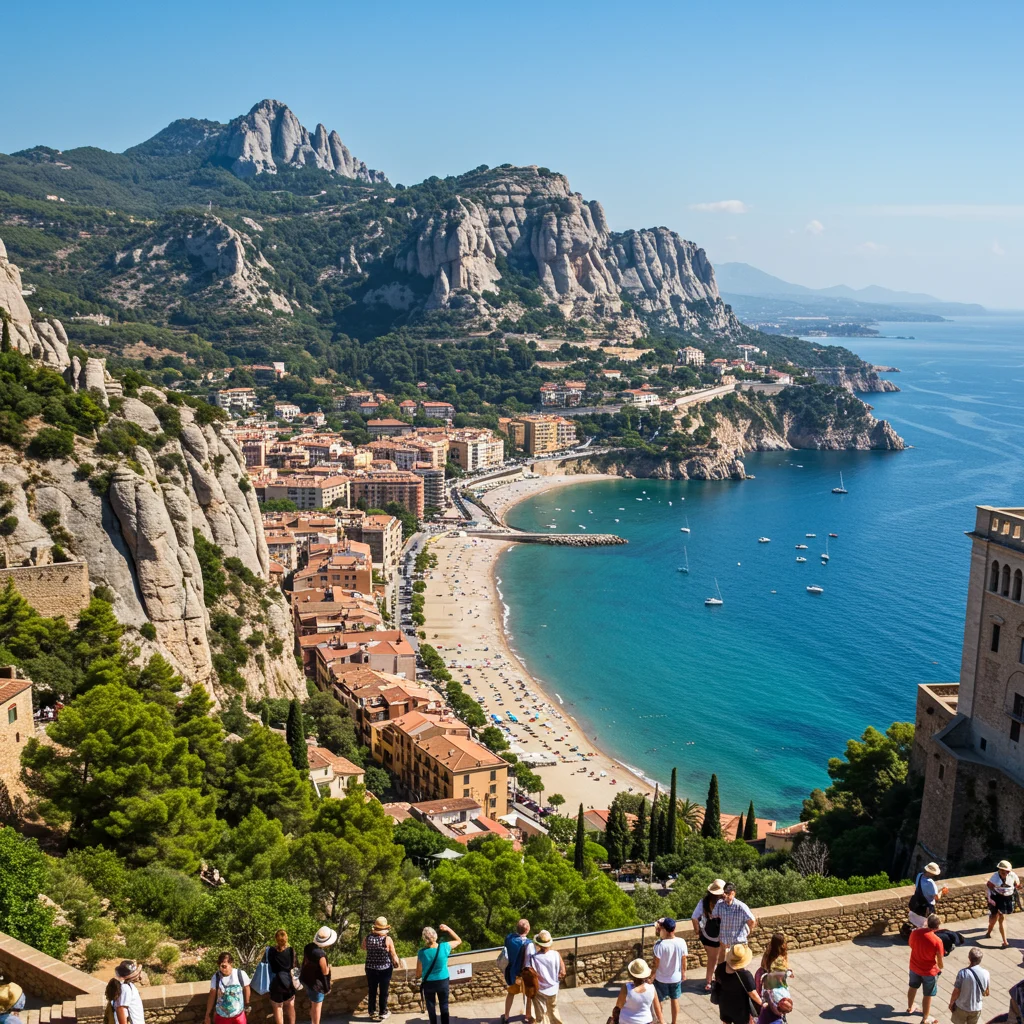
Are tickets required for the Montserrat cable car or funicular?
Yes, tickets are required and can be purchased at the station or online in advance.
Can I swim at Costa Brava beaches year-round?
The best swimming months are May through October, when water temperatures are comfortable.
Are these destinations suitable for children and seniors?
Absolutely. Each location offers accessible attractions and activities for all ages, though some hiking trails may be challenging.
What are the best ways to book tours and activities?
We recommend platforms like Viator for a wide range of options and user reviews.
How to Book on Viator
Booking your Montserrat, Girona, and Costa Brava tour is simple with Viator. Start by searching for your preferred destinations and dates, then compare available tours based on duration, inclusions, and traveler reviews. Secure payment options and instant confirmations make planning stress-free.
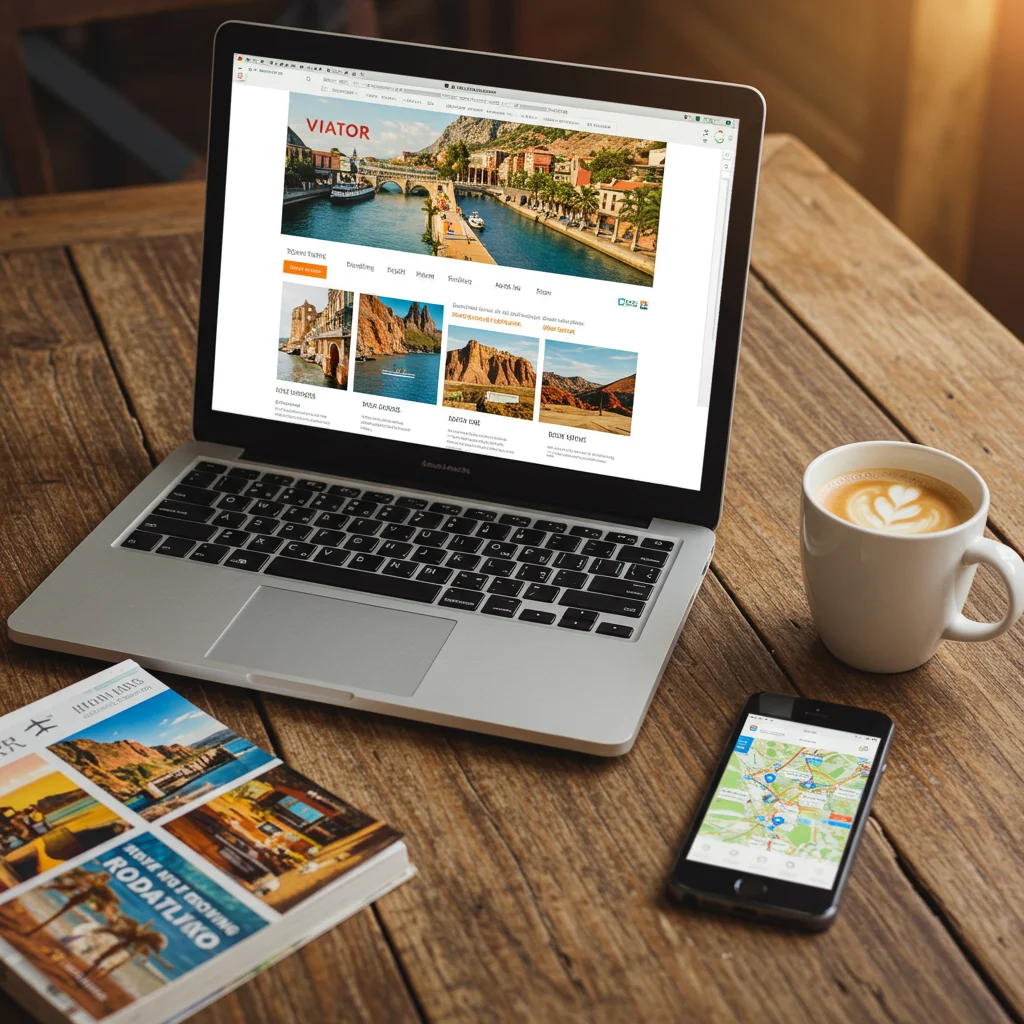
Whether you wish to book activities or reserve a private guide, Viator’s user-friendly platform helps us tailor the journey to our needs. Many tours include skip-the-line tickets, hotel pickups, and local expert guides, ensuring a seamless adventure from start to finish.
Why Should This Barcelona Tour Be on Your Bucket List?
Combining Montserrat, Girona, and the Costa Brava into a single tour offers a rich cross-section of Catalonia’s history, landscapes, and culture. From mountain monasteries to medieval streets and sun-drenched beaches, each destination leaves us with unforgettable memories and a deeper appreciation for the region’s diversity.
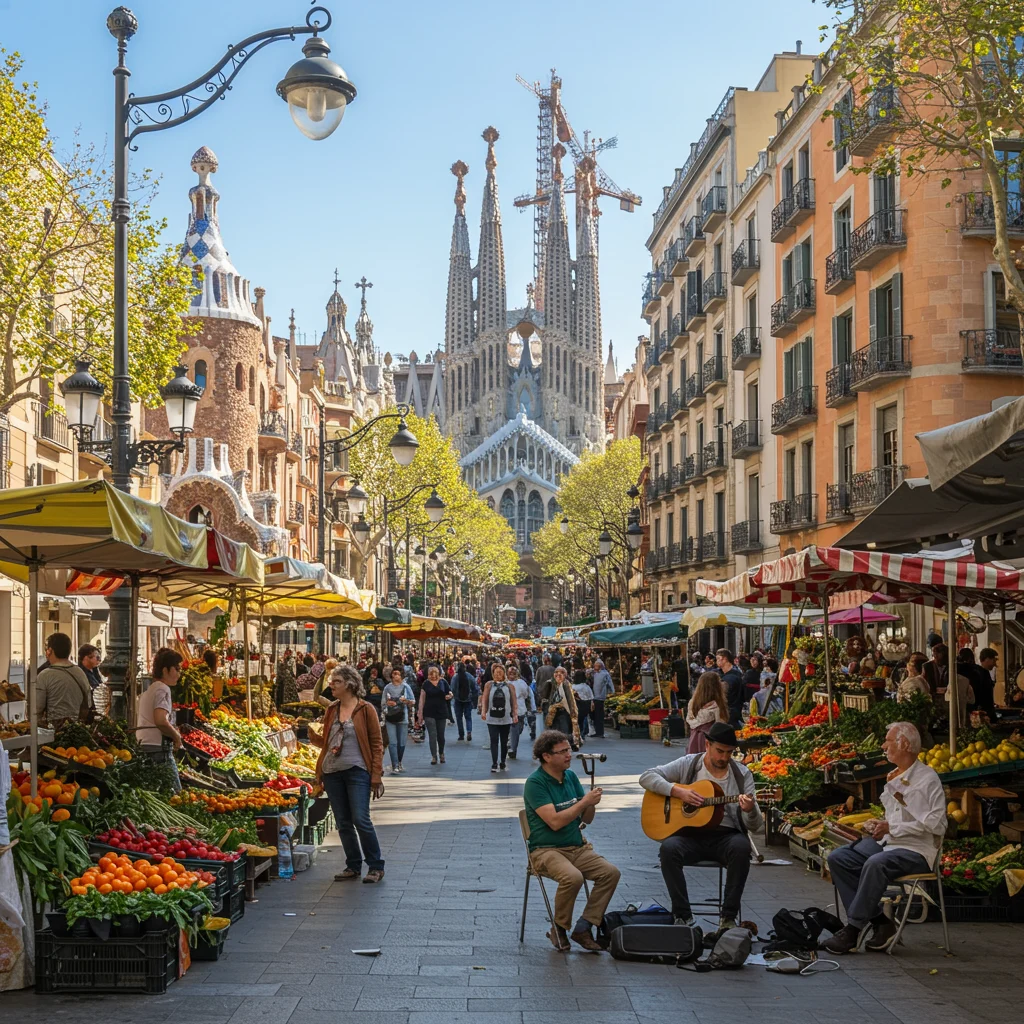
We hope this guide inspires you to plan your journey with confidence and curiosity. For more expert travel inspiration and in-depth resources, visit Izase and let your next adventure begin.
Disclaimer: This information is accurate to the best of our knowledge; however, there may be changes or mistakes. Please verify exact details on the Viator booking page.

